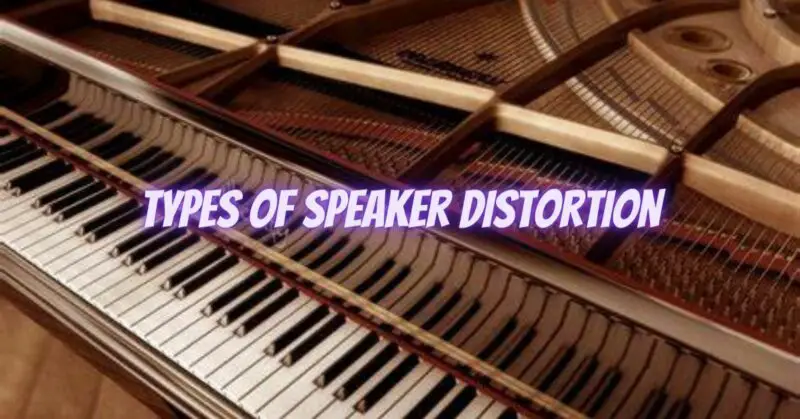Speaker distortion refers to the alteration or distortion of audio signals produced by speakers during playback. While distortion is generally undesirable, it can occur due to various factors and can manifest in different ways. In this article, we will delve into the different types of speaker distortion, exploring their characteristics and effects on sound reproduction.
- Harmonic Distortion:
Harmonic distortion occurs when additional frequencies are generated by the speaker that were not present in the original audio signal. These additional frequencies are typically multiples (harmonics) of the original signal frequency. Harmonic distortion can result in a “muddy” or “cluttered” sound, affecting clarity and detail.
- Intermodulation Distortion:
Intermodulation distortion, also known as IMD or “cross-modulation,” arises when a speaker produces new frequencies that are a combination of two or more different input signals. This type of distortion can create “beating” or “warping” sounds, where unwanted frequencies interact and produce audible artifacts.
- Frequency Response Irregularities:
Speaker distortion can also manifest as irregularities in the frequency response, causing certain frequencies to be exaggerated or diminished. This type of distortion can result in imbalanced tonal reproduction, where certain frequency ranges are emphasized or attenuated, leading to inaccurate sound reproduction.
- Transient Distortion:
Transient distortion occurs when a speaker fails to accurately reproduce rapid changes in sound, such as sharp attacks or fast decays. This distortion can cause blurring or smearing of transient details, reducing the overall definition and impact of the sound.
- Nonlinear Distortion:
Nonlinear distortion refers to any type of distortion that does not adhere to a linear relationship between the input and output signals of a speaker. It encompasses various forms of distortion, including harmonic, intermodulation, and transient distortion. Nonlinear distortion can result in altered dynamics, unnatural sound characteristics, and reduced overall fidelity.
Effects of Speaker Distortion:
- Reduced Fidelity: Speaker distortion compromises the accuracy and faithfulness of sound reproduction, leading to a loss of detail, clarity, and realism in the audio playback.
- Altered Timbre: Different types of distortion can affect the tonal characteristics of the sound, resulting in changes to the original timbre of instruments or vocals. This can lead to a perceived difference in the “color” or “character” of the sound.
- Dynamic Compression: Certain types of distortion, particularly nonlinear distortion, can introduce dynamic compression, where the softer and louder parts of the audio signal are compressed or attenuated, reducing the perceived dynamic range of the music.
- Listener Fatigue: Prolonged exposure to distorted sound can cause listener fatigue and discomfort, as the brain attempts to compensate for the unnatural audio reproduction.
Conclusion:
Understanding the various types of speaker distortion and their effects on sound reproduction is crucial for audio enthusiasts, musicians, and professionals alike. Harmonic distortion, intermodulation distortion, frequency response irregularities, transient distortion, and nonlinear distortion all impact the fidelity and tonal accuracy of the reproduced sound. By recognizing these types of distortion, audio engineers and enthusiasts can strive to minimize and manage distortion to achieve accurate and high-quality sound reproduction.


